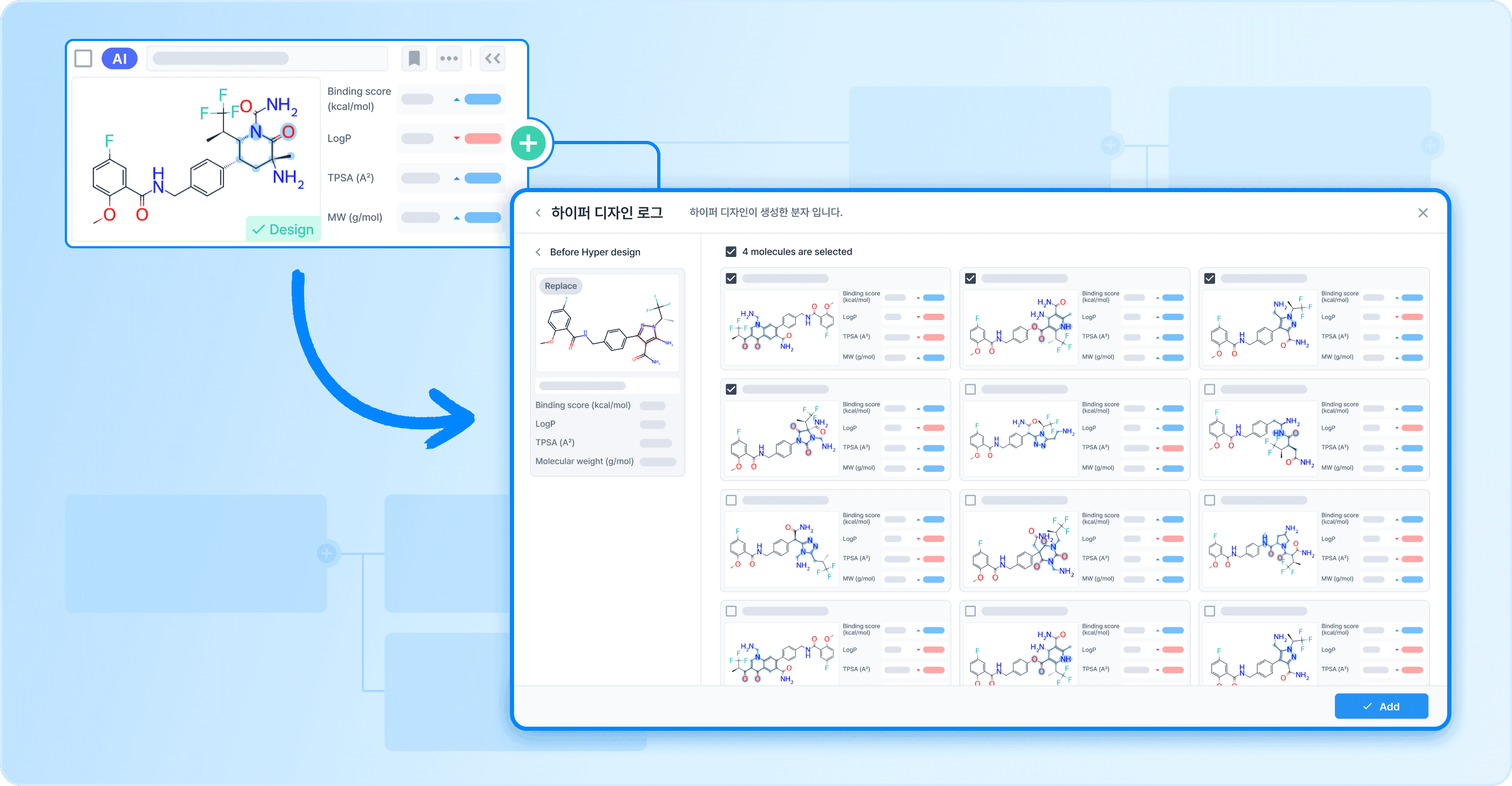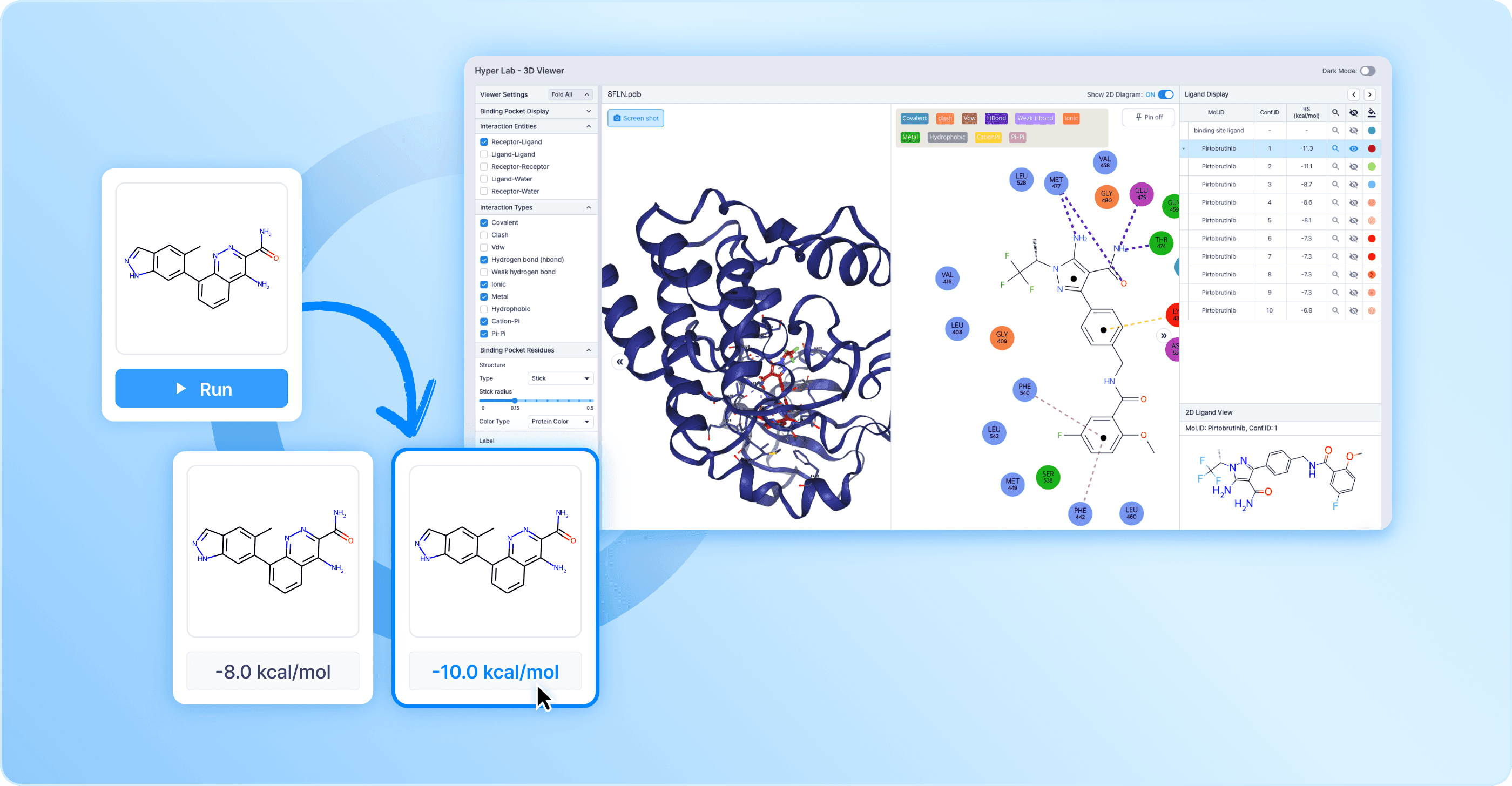Advancing Drug Discovery: A Czech Researcher’s Experience with Hyper Lab

About Our Drug Discovery Research
We are from University Hospital Hradec Kralove in the Czech Republic, and we focus on basic medicinal chemistry, which includes identifying initial hits and making some preclinical candidates.
We do several fields of research. Mostly, we are interested in CNS drug discovery, like creating novel chemical entities for Alzheimer's disease, but we also work on schizophrenia. We have some antimicrobial drug discovery research, which is a part of anti-cancer agents. In the field of anticancer agents, we focus on kinase inhibitors of interest. Currently, we are mostly interested in ATR kinase, which is related to solid tumors, and FLT3 kinase, which is mostly associated with acute myeloid leukemia. So, those are currently the two kinases of our interest.

Challenges in Drug Discovery before using Hyper Lab
Every time, we face the same challenges: insufficient efficiency of ligands toward the target of interest or insufficient selectivity. Sometimes, we encounter metabolic soft spots in the molecule. We occasionally design and prepare compounds with inappropriate physicochemical or other properties. Although we use tools like Swiss ADME/T or other prediction tools, it's still very difficult to optimize all parameters simultaneously. At some point, you must go to the lab, prepare the compound, and test its behavior and activity.
How Hyper Lab Transformed Our Drug Discovery workflow
I believe Hyper Lab helped us step out of our usual way of thinking. Particularly, HyperDesign was the tool we used most frequently, and it is truly unique in the way it proposes structural modifications. We were able to generate a relatively large number of new compounds in a short time, which was very beneficial and exciting. It generates many ideas in a relatively short time, and then it's up to us to check for the commercial availability of those parts.

Comparing Hyper Lab’s usability in Drug Discovery
It was really easy to use and very intuitive. There is a platform from America, probably, you know. Both tools can do more or less the same things, but what we experienced with Platform A is that it somehow cannot propose new chemical modifications effectively. And if it does, the suggestions are very limited. I don't know why, but we were quite disappointed when using it, as we expected more from Platform A. So, your tool, Hyper Lab, I would say, is much better. Undoubtedly.

Suggestions to Enhance Hyper Lab for Drug Discovery
We believe one improvement could be to connect with vendors and check for the chemical availability on the market. Another suggestion is that your software could generate synthetic feasibility, meaning it could propose chemical routes toward synthesizing the compounds.
Why We Recommend Hyper Lab for Drug Discovery Researchers
We definitely recommend it to them. It's worth it. We collaborate a lot with many academic institutions. We have four universities here, and, you know, we know each other. Everyone is working on medicinal chemistry or drug discovery research at some departments, so we will definitely recommend it to them.
Would you like to start a free trial of Hyper Lab or schedule a meeting to discuss its implementation? You can easily make a reservation through the links below:
- Start your Free-trial: https://abit.ly/ubzcrj
- Schedule an Meeting: https://abit.ly/6tr1uz